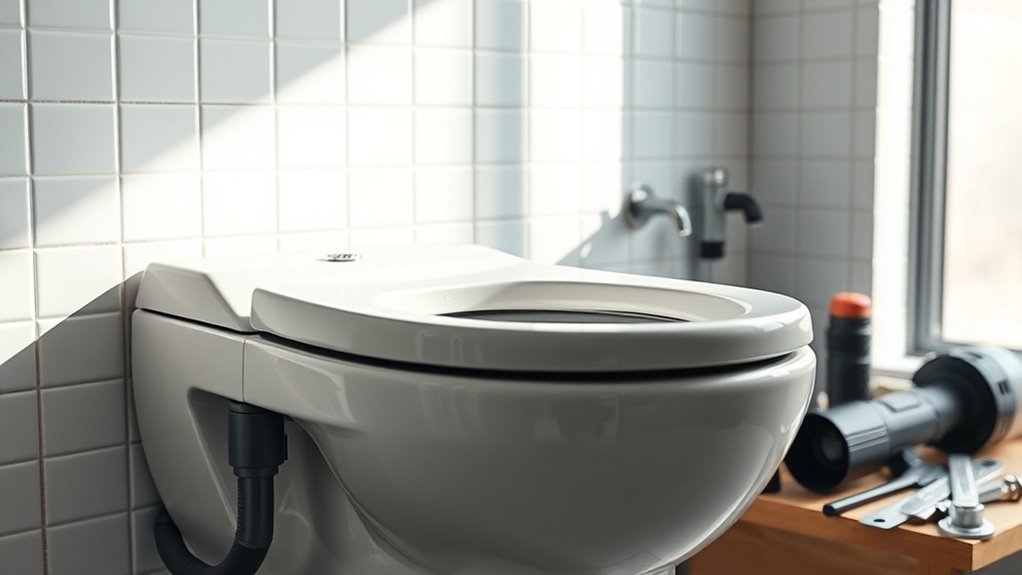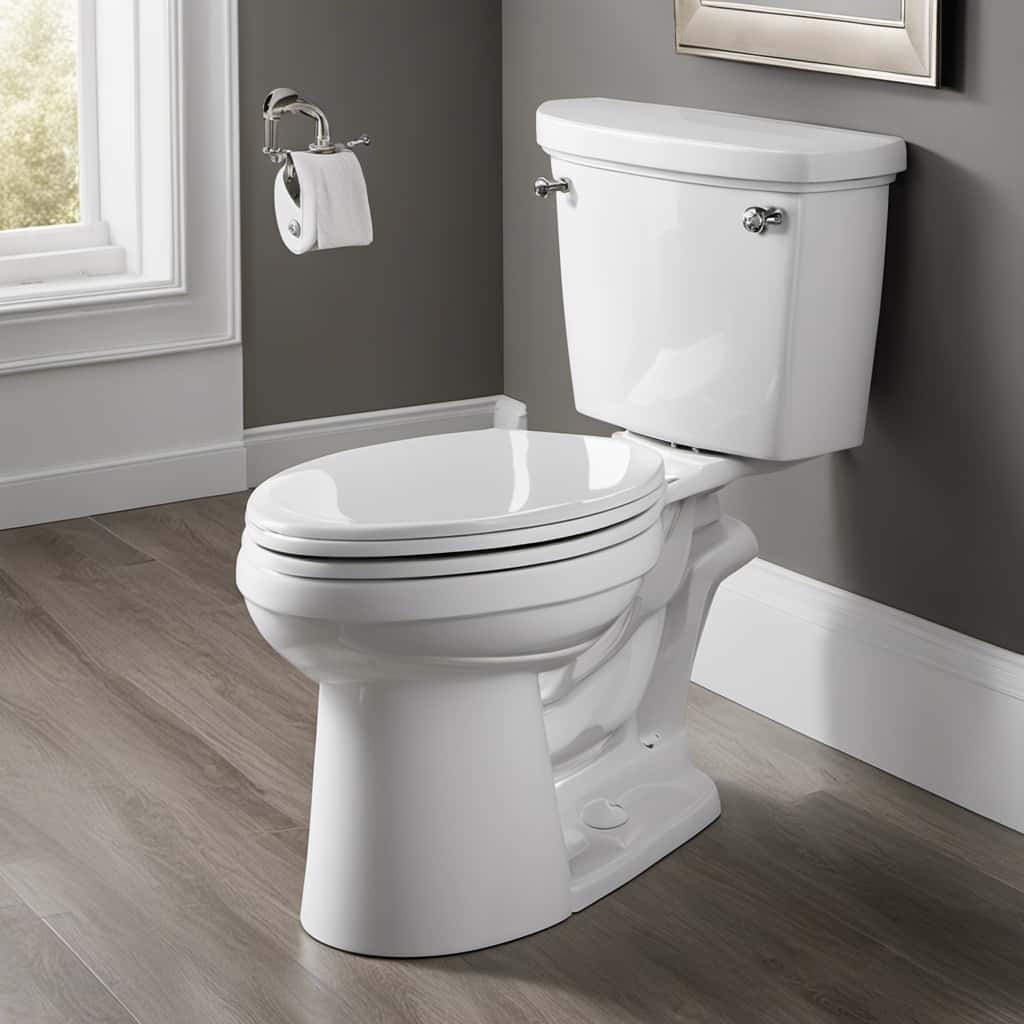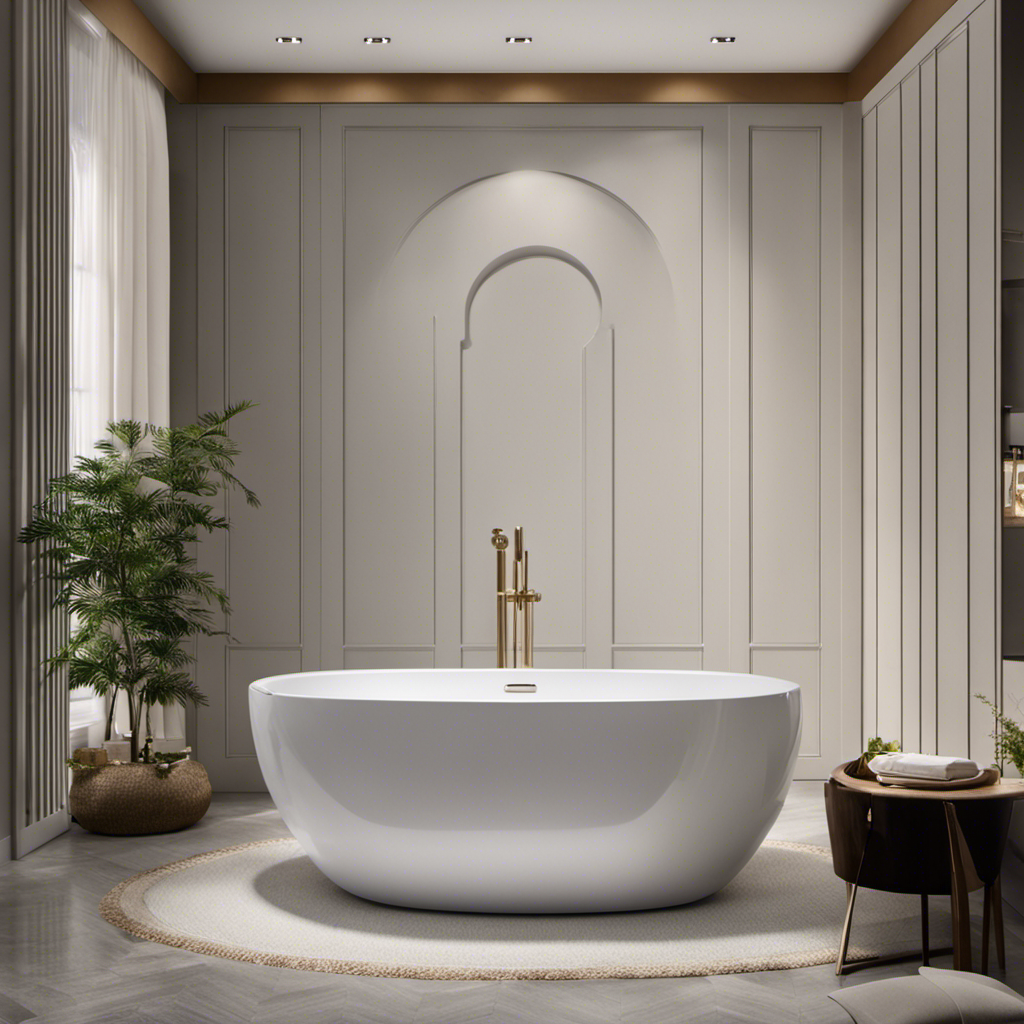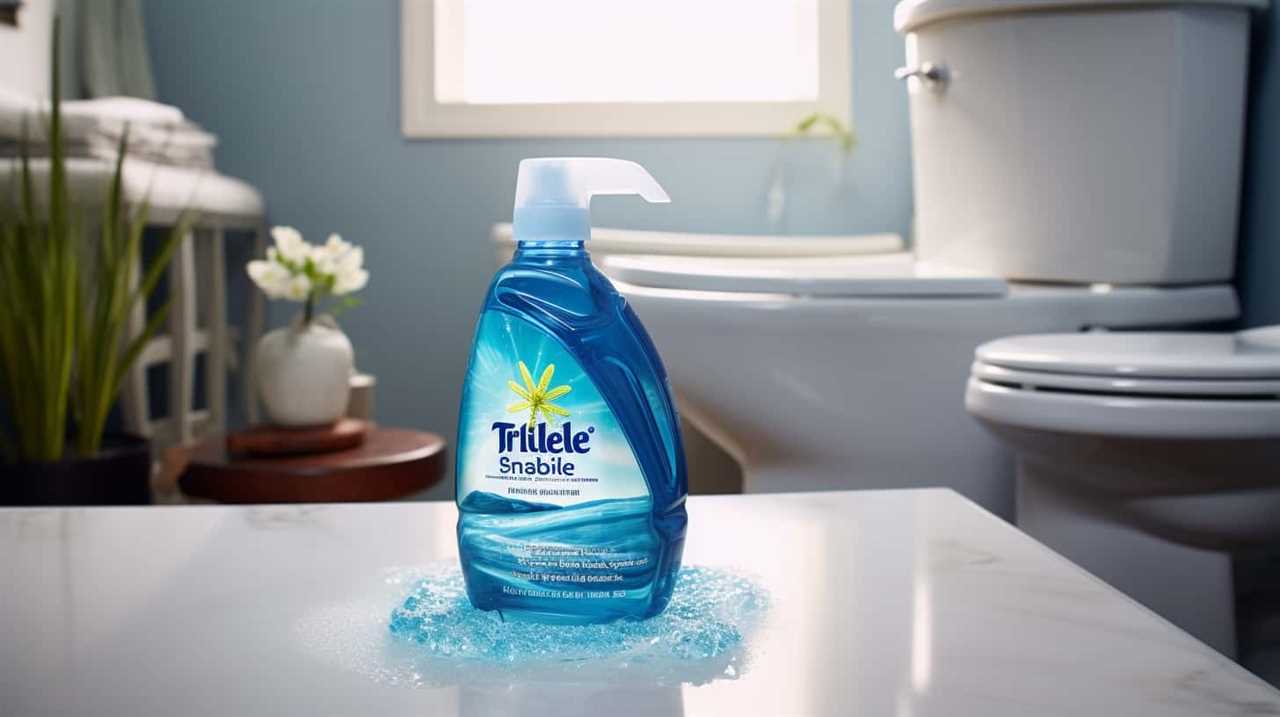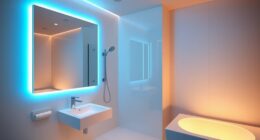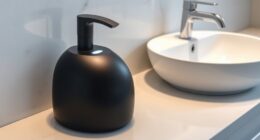When budgeting for a new toilet, remember that costs often go beyond the sticker price. You might face unexpected plumbing issues, like rusted bolts or corroded connections, requiring repairs or upgrades. Professional installation can add hefty labor fees, especially if structural or pipe rerouting is necessary. Don’t forget about hidden expenses like extra parts, tiling, or floor repairs. Knowing these potential costs upfront helps you plan better; stay tuned to learn how to tackle these hidden expenses effectively.
Key Takeaways
- Installation challenges like rusted bolts or uneven floors can increase labor and repair costs unexpectedly.
- Upgrading outdated plumbing may require rerouting pipes or replacing components, adding to the project budget.
- Additional parts such as wax rings, bolts, and flange repair kits often incur extra expenses beyond the toilet price.
- Professional installation ensures proper setup but involves labor fees that can significantly raise total costs.
- Hidden issues like structural modifications or unforeseen plumbing problems can cause costs to surpass initial estimates.
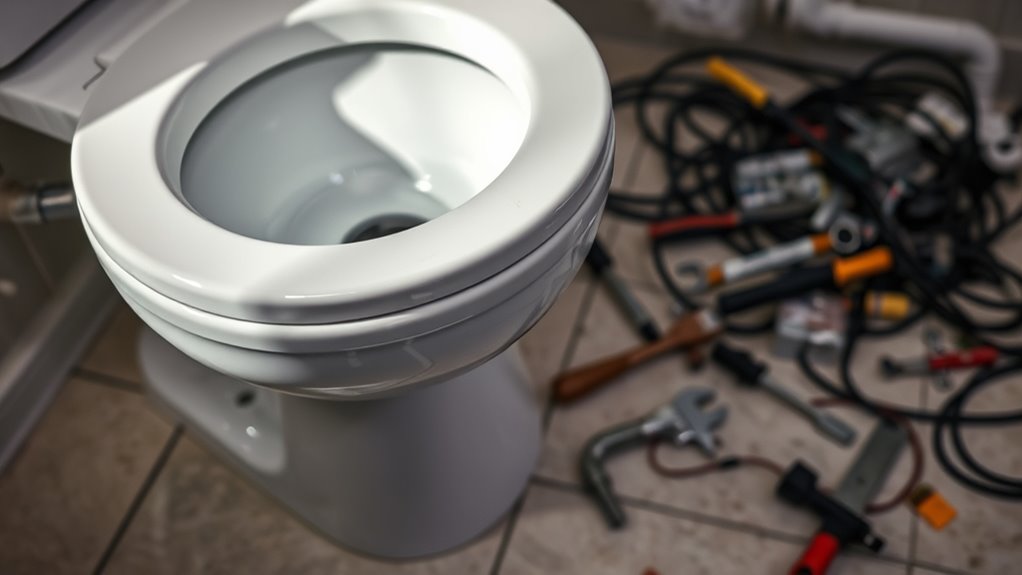
Buying a new toilet might seem straightforward, but there are often hidden costs that can catch you off guard. One of the biggest surprises is installation challenges. While it might look simple to swap out your old toilet with a new one, the reality is often more complicated. You could encounter issues like rusted bolts, corroded flange connections, or uneven flooring that require additional tools, parts, or even professional help. If your existing plumbing isn’t compatible with the new model, you might need to upgrade your plumbing system. This can involve replacing old pipes, adjusting the flange height, or installing new shutoff valves, all of which add unexpected expenses. These upgrades aren’t always obvious until you begin the installation process, meaning you might need to pause and spend more money than initially planned.
Unexpected plumbing issues can significantly increase your toilet upgrade costs.
Another hidden cost comes from the need for plumbing upgrades. Older homes often have outdated pipes that aren’t designed for modern toilets, especially water-efficient models. Upgrading your plumbing might seem like an unnecessary expense at first, but neglecting it can lead to leaks, frequent clogs, or poor flushing performance later on. If the supply lines or waste lines are compromised, they’ll require replacement or repair, which adds to the overall cost. Sometimes, the existing plumbing configuration doesn’t support the new toilet’s features, such as dual flush or bidet functions, prompting further modifications. These upgrades can quickly escalate your project beyond the initial price estimate, especially if they involve structural work or extensive pipe rerouting.
Beyond installation and plumbing, don’t forget about other potential hidden costs. You may need to purchase additional parts like wax rings, flange repair kits, or new bolts and nuts. If your bathroom floor requires reinforcement or tiling adjustments to fit the new fixture, those costs can add up as well. Plus, if you opt for a high-end model, the price of the toilet itself might seem reasonable compared to the installation and upgrade expenses that follow. Hiring a professional plumber can ensure the job is done correctly, but their labor fees will also factor into your budget. Planning for these costs upfront prevents surprises and ensures you’re not caught off guard when the bill arrives.
Additionally, considering the availability of local plumbing services can influence your overall costs, as some areas may have higher labor fees or limited professional options, affecting your budget and timeline.
In the end, buying a new toilet isn’t just about the sticker price. It’s about understanding the potential hidden costs associated with installation challenges and plumbing upgrades. By considering these factors early on, you can budget more accurately and avoid unexpected expenses that could turn a simple upgrade into a costly project.
Frequently Asked Questions
How Long Does Professional Installation Typically Take?
The installation time for a new toilet varies depending on your home’s setup, but generally, professional labor takes about 1 to 2 hours. Factors like plumbing complexity or additional adjustments can extend this. You should be prepared for a quick, efficient process when hiring a professional, ensuring your new toilet is installed correctly and safely without unexpected delays. This way, you can enjoy your upgraded bathroom sooner.
Are There Additional Costs for Eco-Friendly Toilets?
When considering eco-friendly toilets, you might face extra costs like higher water consumption or disposal fees. These toilets are designed to save water, but some models could use more upfront, impacting your budget. Disposal fees may also add to your expenses if old toilets need proper disposal or recycling. Be sure to factor in these potential costs to get an accurate picture of your total investment in an eco-friendly toilet.
What Maintenance Expenses Might Arise Over Time?
Did you know that plumbing issues cause around 10% of home repairs annually? When considering long-term maintenance, unexpected repairs can arise from worn-out parts or clogs, leading to extra costs. Routine upkeep, like replacing seals or flushing mechanisms, is essential to prevent bigger problems. Staying proactive helps you manage ongoing expenses and keep your eco-friendly toilet functioning smoothly, avoiding surprises that could strain your budget.
Can a New Toilet Increase Home Insurance Premiums?
A new toilet generally won’t directly increase your insurance premiums. However, if the installation involves significant plumbing upgrades or repairs, your insurer might request coverage adjustments or inspections, which could impact your premiums. It’s wise to check with your provider beforehand. Keep in mind that improvements reducing damage risk might even lower your premiums, but always verify how changes could influence your insurance coverage and costs.
Are There Hidden Costs Related to Plumbing Modifications?
Think of your plumbing as the veins of your home—when you upgrade your toilet, plumbing modifications can be like hidden currents below the surface. These hidden costs might include rerouting pipes or upgrading fixtures, which often aren’t obvious upfront. You need to prepare for unexpected expenses, as plumbing modifications can quickly add up beyond the initial purchase. Always budget extra to cover these potential hidden costs and keep your project flowing smoothly.
Conclusion
So, before you rush to buy that shiny new toilet, remember there’s more than just the sticker price. Hidden costs like installation, plumbing upgrades, and future maintenance can quickly add up. Are you prepared for the surprises lurking behind the bathroom door? Take the time now to budget wisely—you might just avoid an unexpected expense that could turn your project into a costly ordeal. The true cost could be waiting just around the corner.
